History
 The
The List of counts of Barcelona
Non-dynastic (appointed by the rulers of the Carolingian Empire), 801–878
During this period, the County of Barcelona was one of many Counties at the March (territory), March located in the Eastern Pyrenees and known as Marca Hispanica, Gothia or Marca Hispanica. The Counts of this March were appointed by the Carolingian authorities.House of Sunifred (Bellonids), 878–1162
The crisis of the Carolingian Empire, incapable of attending to the requests for help against the Moorish attacks coming from the Catalan counts, resulted in a disconnection between them and the Carolingian central power far North. The County of Barcelona became a hereditary title. , - , Wilfred the Hairy, Wilfred I the Hairy878 –897, ,
 , , c.840
, , c.840Girona
''Disputed filiation'', , Guinidilda
877
10 children, , 897
Tremp
aged 46–47 , - , Wilfred II Borrel, Wilfred II Borrell I
897 –26 April 911, ,
 , , c.874
, , c.874Girona
First son of Wilfred the Hairy, Wilfred I
and Guinidilda, , Garsenda
898
1 child, , 26 April 911
Barcelona
aged 36–37 , - , Sunyer, Count of Barcelona, Sunyer
26 April 911 –947, ,
 , , c.890
, , c.890Girona
Sixth son of Wilfred the Hairy, Wilfred I
and Guinidilda, , Aimilda
914
1 child
Richilde
925
5 children, , 15 October 950
Lagrasse
aged 59–60 , - , Miro, Count of Barcelona, Miro I
947 –966, ,
 , , c.926
, , c.926Barcelona
Second son of Sunyer, Count of Barcelona, Sunyer
and Richilde, , ''Unmarried'', , 966
aged 39–40 , - , Borrell II, Count of Barcelona, Borrell II
947 –992
''(joint rule 947-966)'', ,
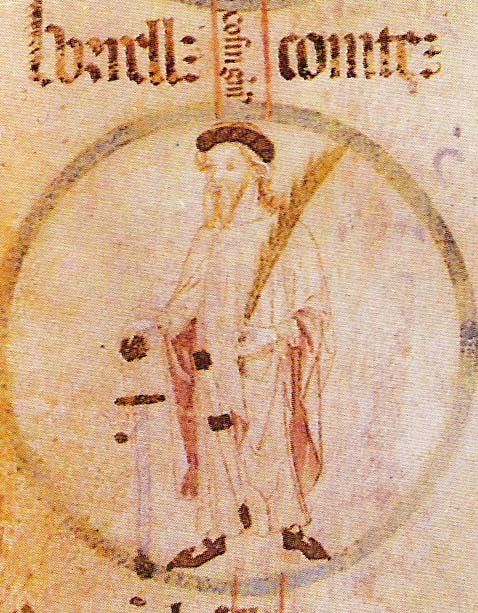 , , c.927
, , c.927Barcelona
Third son of Sunyer, Count of Barcelona, Sunyer
and Richilde, , Luitgarde
968
5 children, , 992
aged 64–65 , - , Ramon Borrell, Count of Barcelona, Ramon Borrell
988 –8 September 1017
''(joint rule 988–992)'', ,
 , , 26 May 972
, , 26 May 972Girona
Son of Borrell II, Count of Barcelona, Borrell II
and Luitgarde, , Ermesinde of Carcassonne
993
2 children, , 8 September 1017
Barcelona
aged 45 , -bgcolor="#EECCAA" , Ermesinde of Carcassonne
993–1021
1035–1039
''(joint rule 993–1017);
(regent 1017–1021, 1035–1039)'', ,
 , , 972
, , 972Carcassonne
Daughter of Roger I of Carcassonne
and Adelaide of Melgueil, , Ramon Borrell, Count of Barcelona, Ramon I Borrell III
993
2 children, , 1 March 1058
Sant Quirze de Besora
aged 85–86 , - , Berenguer Ramon I, Count of Barcelona, Berenguer Ramon I the Crooked
8 September 1017 –31 March 1035
''(under regency of Ermesinde of Carcassonne 1017–1021)'', ,
 , , 1004
, , 1004Son of Ramon Borrell, Count of Barcelona, Ramon Borrell
and Ermesinde of Carcassonne, , Sancha of Castile
1021
2 children
Guisla of Lluçá
1027
3 children, , 31 March 1035
Barcelona
aged 30–31 , - , Ramon Berenguer I, Count of Barcelona, Ramon Berenguer I the Old
31 March 1035 –26 June 1076
''(under regency of Ermesinde of Carcassonne 1035–1039)'', ,
 , , 1023
, , 1023Girona
Son of Berenguer Ramon I, Count of Barcelona, Berenguer Ramon I
and Sancha of Castile, , Élisabeth de Nîmes
1039
3 children
Blanche de Narbonne
16 March 1051
''(annulled 1052)''
no children
Almodis de La Marche
1056
Barcelona
''(together since 1052)''
4 children, , 26 June 1076
Barcelona
aged 52–53 , -bgcolor="#EECCAA" , Almodis de La Marche
1052 –16 October 1071
''(joint rule)'', ,
 , , c.1020
, , c.1020Toulouse
Daughter of Bernard I de La Marche
and Amélie de Rasès, , Hugh V of Lusignan
1038
''(annulled c.1040)''
3 children
Pons, Count of Toulouse
1040 or 1045
''(annulled 1052)''
4 children
Ramon Berenguer I, Count of Barcelona, Ramon Berenguer I
1056
Barcelona
''(together since 1052)''
4 children, , 16 October 1071
Barcelona
aged 50–51 , - , Ramon Berenguer II, Count of Barcelona, Ramon Berenguer II the Towhead
26 June 1076 –6 December 1082, ,
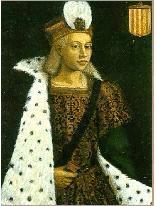 , , c.1053
, , c.1053Girona
First/Second son of Ramon Berenguer I, Count of Barcelona, Ramon Berenguer I
and Almodis de La Marche, , Mafalda of Apulia-Calabria
1078
Barcelona
3 children, , 6 December 1082
Sant Feliu de Buixalleu
aged 28–29 , - , Berenguer Ramon II, Count of Barcelona, Berenguer Ramon II the Fratricide
26 June 1076 –1097
''(joint rule 1076–1082)'', , , , c.1053
First/Second son of Ramon Berenguer I, Count of Barcelona, Ramon Berenguer I
and Almodis de La Marche, , ''Unmarried'', , 1097
Jerusalem
aged 43–44 , - , Ramon Berenguer III, Count of Barcelona, Ramon Berenguer III the Great
6 December 1082 –19 July 1131
''(joint rule 1082–1097)'', ,
 , , 11 November 1082
, , 11 November 1082Rodez
Son of Ramon Berenguer II, Count of Barcelona, Ramon Berenguer II
and Mafalda of Apulia-Calabria, , María Díaz de Vívar
1103
2 children
Almodis de Mortain
1106
no children
Douce I, Countess of Provence
3 February 1112
Arles
7 children, , 19 July 1131
Barcelona
aged 48 , - , Ramon Berenguer IV, Count of Barcelona, Ramon Berenguer IV the Saint
19 July 1131 –6 August 1162, ,
 , , c.1113
, , c.1113Barcelona or Rodez
Son of Ramon Berenguer III, Count of Barcelona, Ramon Berenguer III
and Douce I, Countess of Provence, , Petronilla of Aragon
August 1050
Lleida
5 children, , 6 August 1162
Borgo San Dalmazzo
aged 48–49 , - The succession of Ramon Berenguer IV and Petronilla led to the creation of the
House of Barcelona, 1164–1410
, Alfonso II of Aragon, Alphonse I the Troubadour18 July 1164 – 25 April 1196, ,
 , , 1-25 March 1157
, , 1-25 March 1157Huesca
son of Ramon Berenguer IV, Count of Barcelona, Ramon Berenguer IV of Barcelona and Petronilla of Aragon, , ''marriage agreement with
Mafalda of Portugal (daughter of Afonso Henriques), Mafalda of Portugal 1159-1162, not fulfilled''
Sancha of Castile, Queen of Aragon, Sancha of Castile
18 January 1174
Zaragoza
7 children, , 25 April 1196
Perpignan
aged 44 , - , Peter II of Aragon, Peter I the Catholic
25 April 1196 – 13 September 1213, ,
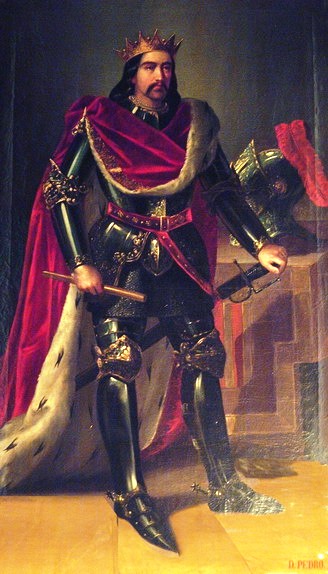 , , July 1178
, , July 1178Huesca
son of Alfonso II of Aragon, Alfons I and Sancha of Castile, Queen of Aragon, Sancha of Castile, , Marie of Montpellier
15 June 1204
2 children, , 12 September 1213
Battle of Muret
aged 35 , - , James I of Aragon, James I the Conqueror
13 September 1213 – 27 July 1276, ,
 , , 2 February 1208
, , 2 February 1208Montpellier
son of Peter II of Aragon, Peter I the Catholic and Marie of Montpellier, , ''marriage agreement with
Aurembiaix, Aurembiaix, Countess of Urgell 1209, not fulfilled''
Eleanor of Castile (1202-1244), Eleanor of Castile
6 February 1221
Ágreda
1 child
Violant of Hungary
8 September 1235
Barcelona
10 children
Teresa Gil de Vidaure
''(lover, then wife)''
1255
''(uncanonical marriage, repudiated 1260)''
2 children, , 27 July 1276
Valencia
aged 68 , - , Peter III of Aragon, Peter II the Great
27 July 1276 – 2 November 1285, ,
 , , July or August 1240
, , July or August 1240Valencia
son of James I of Aragon, James I and Violant of Hungary, , Constance of Sicily, Queen of Aragon, Constance of Sicily
13 June 1262
Montpellier
6 children, , 2 November 1285
Vilafranca del Penedès
aged 45 , - , Alfonso III of Aragon, Alphonse II the Liberal
2 November 1285 – 18 June 1291, ,
 , , 4 November 1265
, , 4 November 1265Valencia
son of Peter III of Aragon, Peter II and Constance of Sicily, Queen of Aragon, Constance of Sicily, , Eleanor of England (1269-1298), Eleanor of England
15 August 1290
''(by proxy and not consummated; death of the groom during bride's way to Aragon)'', , 18 June 1291
Barcelona
aged 27 , - , James II of Aragon, James II the Fair
18 June 1291 – 2 November 1327, ,
 , , 10 August 1267
, , 10 August 1267Valencia
son of Peter III of Aragon, Peter II and Constance of Sicily, Queen of Aragon, Constance of Sicily, , Isabella of Castile, Duchess of Brittany, Isabella of Castile
1 December 1291
Soria
No children
Blanche of Anjou
29 October or 1 November 1295
Vilabertran
10 children
Marie of Lusignan, Queen of Aragon, Marie de Lusignan
15 June 1315 ''(by proxy)''
Nicosia
27 November 1315 ''(in person)''
Girona
No children
Elisenda de Montcada
25 December 1322
Tarragona
No children, , 5 November 1327
Barcelona
aged 60 , - , Alfonso IV of Aragon, Alphonse III the Kind
2 November 1327 – 24 January 1336, ,
 , , 2 November 1299
, , 2 November 1299Naples
son of James II of Aragon and Blanche of Anjou, , Teresa d'Entença
1314
Lerida
7 children
Eleanor of Castile (1307–1359), Eleanor of Castile
5 February 1329
Tarazona
2 children, , 27 January 1336
Barcelona
aged 37 , - , Peter IV of Aragon, Peter III the Ceremonious
24 January 1336 – 5 January 1387, ,
 , , 5 October 1319
, , 5 October 1319Balaguer
son of Alfonso IV of Aragon, Alphonse III and Teresa d'Entença, , Maria of Navarre
25 July 1337
Zaragoza
2 children
Leonor of Portugal (1328-1348), Leonor of Portugal
14 or 15 November 1347
Barcelona
No children
Eleanor of Sicily
27 August 1349
Valencia
4 children
Sibila of Fortia
11 October 1377
Barcelona
3 children, , 5 January 1387
Barcelona
aged 68 , - , John I of Aragon, John the Hunter
5 January 1387 – 19 May 1396, ,
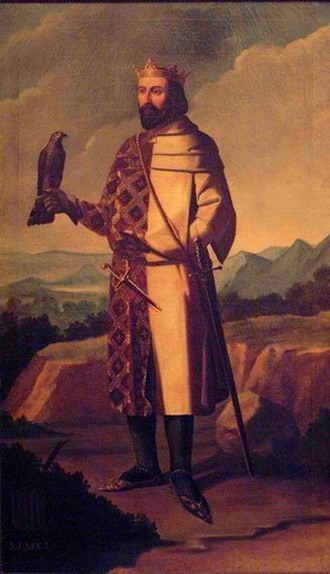 , , 27 December 1350
, , 27 December 1350Perpignan
son of Peter IV of Aragon, Peter III and Eleanor of Sicily, , ''marriage agreement with
Joan of France (1351–1371), Jeanne-Blanche of France 1370-1371, not fulfilled''
Martha of Armagnac
24 June 1373
Barcelona
5 children
Violant of Bar
2 February 1380
Perpignan
7 children, , 19 May 1396
Empordà, Foixà
aged 46 , - , Martin the Humanist
19 May 1396 – 31 May 1410, ,
 , , 1356
, , 1356Girona
son of Peter IV of Aragon, Peter III and Eleanor of Sicily, , Maria de Luna
13 June 1372
Barcelona
4 children
Margaret of Prades
17 September 1409
Barcelona
No children, , 31 May 1410
Barcelona
aged 54 , -
House of Trastamara 1412-1462
Martin died without legitimate descendants (''interregnum'' 31 May 1410 – 24 June 1412). By the Compromise of Caspe of 1412 the County of Barcelona and the rest of the dominions of theCatalan Civil War 1462-1472
During the Catalan Civil War the Catalan authorities transferred the title of Count of Barcelona to a succession of 3 foreign sovereigns.House of Trastamara (reinstated) 1472-1555
After the Catalan Civil War, the House of Trastamara was restituted as tenants of the Count of Barcelona title and thus sovereigns of the Principality of Catalonia.Habsburg Spain, House of Habsburg 1516-1641
House of Bourbon, House of Bourbon at France (Reapers' War), 1641–1659
Habsburg Spain, House of Habsburg (reinstated) 1659-1700
In 1697 the Louis Joseph, Duke of Vendôme, Duke of Vendôme briefly re-conquers Catalan capital city of Barcelona, and Louis XIV of France was reinstated as Count of Barcelona for some months. On January 9, 1698, Catalonia is returned to Charles II after signing the Peace of Ryswick, Treaty of Rijswijk.War of the Spanish Succession, Spanish war of Succession 1700-1714
Charles II of Spain, Charles II's testament in favor of Philip V of Spain, Philip of Anjou destabilized Western Europe because it meant too much power for the Kingdom of France. The rest of the European powers tried to impose another pretender to the Crown of Spain: the Charles VI, Holy Roman Emperor, Archduke Charles of Austria. The Catalans were caught in the middle of this major conflict: the War of the Spanish Succession, Spanish Succession War. They initially supported Philip V of Spain, Philip of Anjou but afterward shifted their aligeance towards Charles VI, Holy Roman Emperor, Archduke Charles, who was committed to maintaining the composite monarchy system and thus respect the Catalan Constitutions.
House of Bourbon-Anjou, House of Bourbon (Spanish branch) 1714-1808
In 1714, Catalan lost their war (within the War of the Spanish Succession, Spanish war of Succession conflict) against the remaining sole pretender to the Crown of Spain: Philip V of Spain, Philip of Anjou. Through the Nueva Planta decrees, the new king Philip V of Spain, Philip V abolished the Catalan Constitutions and dissolved the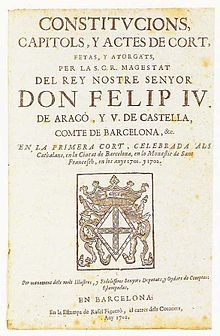
House of Bonaparte 1808-1813
In 1808 Charles IV of Spain, Charles IV and his son Ferdinand VII of Spain, Ferdinand resign from their Crown of Spain titles and transfer them to Napoleon, Emperor Napoleon, who kept for himself the title of Count of Barcelona. By 1812, once he had full military control over theHouse of Bourbon, House of Bourbon (restored) 1813-1868
Isabella of Spain was deposed by a Glorious Revolution (Spain), liberal revolution and went into exile.
House of Savoy 1870–1873
After a brief First Spanish Republic, Republican period, the Spanish government offered the kingship and its accessory titles (including that of 'Count of Barcelona') to Amadeo Duke of Aosta and son of the king of Italy Victor Emmanuel II.House of Bourbon-Anjou, House of Bourbon (restored) 1874–1931
A pronunciamiento deposed the Republican government that followed the abdication of Amadeo I of Spain, Amadeo I and restored the House of Bourbon, Bourbons as kings of Spain. In the 1931 Spanish local elections, 12 April 1931 municipal elections, the Republicans short of winning a majority of councilors overall, won a sweeping majority in major cities. These elections were perceived as a plebiscite on the monarchy, and the king left the country and the Second Spanish Republic was proclaimed on 14 April 1931.House of Bourbon-Anjou, House of Bourbon (in exile) 1931–1975
During the Second Spanish Republic, 2nd Spanish Republic and Francoist Spain, Francoist Dictatorship the Bourbons remained in exile and retained their dynastic titles, including 'Count of Barcelona'.House of Bourbon, House of Bourbon (restored) 1975 – present day
Although on 26 July 1947, Spain was declared a kingdom, no monarch was designated until 1969, when Franco established Juan Carlos I, Juan Carlos of Bourbon as his official heir. With the death of Franco on 20 November 1975, Juan Carlos I, Juan Carlos became the King of Spain.See also
*List of Aragonese monarchs *List of Spanish monarchs *List of Viscounts of BarcelonaReferences